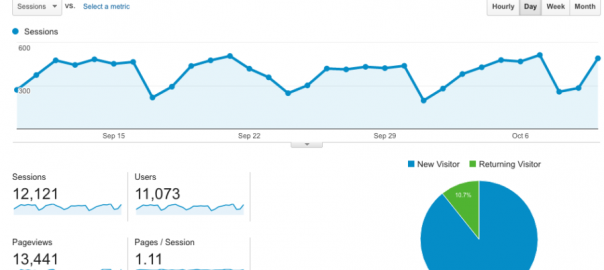I’ve had the same question come up with a few different clients recently, so I’m betting it’s one you might be asking, too:
Which social data do you trust?
Because you most likely have multiple sources.

For example, any socially active company will most likely have the following data sources:
- Facebook Insights (including ad metrics)
- LinkedIn Analytics
- Twitter data
- Google Analytics
- Email data
- Proprietary third-party platforms (this is where it really gets fun!)
All these sources present viable data, but they’re usually not consistent.
In other words, Google Analytics may be telling you Facebook is referring 28 percent of all traffic to your site (good for you, if this is the case!). But, your Facebook Insights and ad metrics are telling a different story.
Pretty common, right?
Then, add in the unneeded complexity of third-party platforms. Companies that use their own measurement platform–namely agencies and web companies who refuse to use GA. These platforms rarely match up data with GA or social platform metrics.
So, suddenly we have a big problem. We have three different sources of data–and no one to tell us what’s right and what’s not.
Add to that the fact that social platforms are either exaggerating or wildly inflating metrics like video views, and you have marketing and PR directors everywhere asking one big question:
Who, or what data, do I trust?
Good question.
Here’s my thinking on the topic.
#1: (Usually) Default to Google Analytics
That’s the industry standard. Most people know how to use it. It’s probably the most accurate. I’d try to stay away from third-party platforms where you can’t necessarily see under the hood, and rely on the platform millions of people use each day.
#2: Google Analytics > Social metrics
Again, I’d lean toward GA when looking at referral traffic, in particular. Again, gold standard. And, given the recent news from Facebook re: video views, I’m not all that inclined to believe everything they’re reporting on these days anyway.
#3: Be careful to manage expectations with social metrics
Here’s a simple rule I try to use: If it feels too good to be true, it probably is. Case in point: Video views on Facebook! For the last year-plus, we’ve been seeing these HUGE video view numbers and licking our chops. So many views! But, at the outset, it seemed too good to be true, right? RIGHT? If it seems to good to be true, it probably is. The smart marketers saw this coming. We were managing expectations with clients and stakeholders. So, when news broke that, in fact, Facebook had inflated these view metrics, we knew exactly what to say and how to manage the message.
Digital & Social Articles on Business 2 Community(50)








